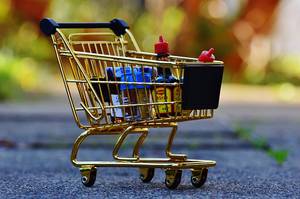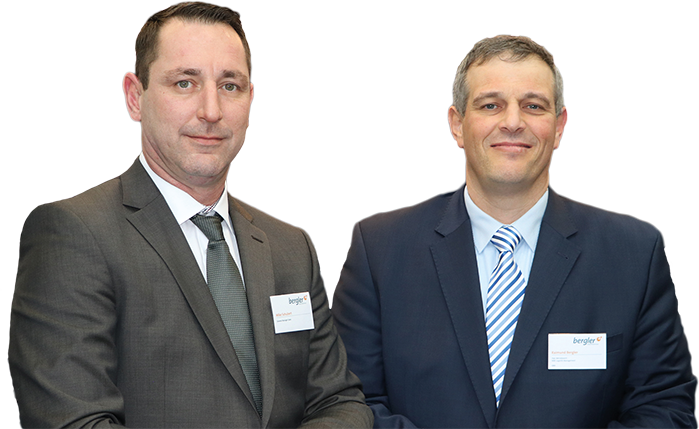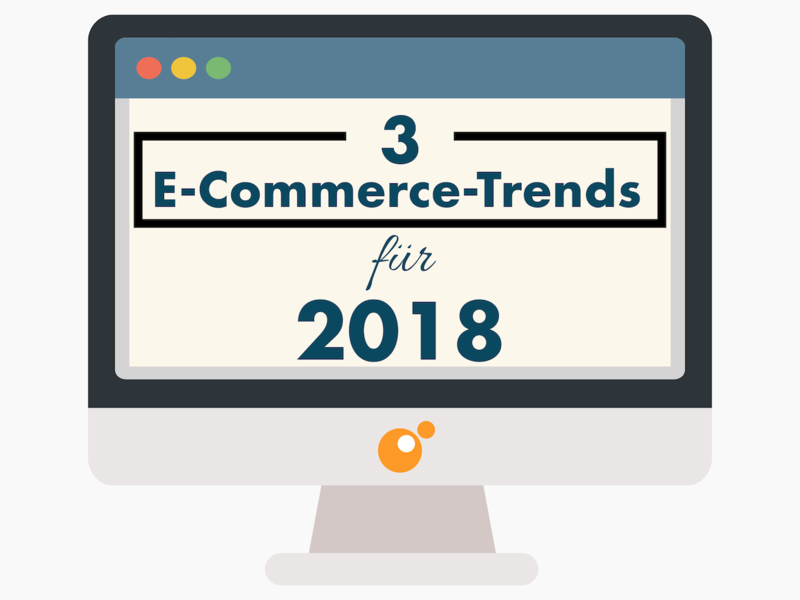
We as Fulfillment service provider always talk about online retailers finally being able to concentrate on their core competencies when they outsource tasks such as receiving goods, storage, packaging, shipping, returns management and much more to our team. Looking at the newest trends that are currently shaping E-Commerce, this is more than appropriate: strategies that have worked well offline so far must be put to the test and every measure costs time. New challenges are already on the doorstep - are you ready for them and have already set the first course? We have picked out three e-commerce trends for 2018 that could be interesting for your success!
Do you know it? The parcel service hands over your order to you, you open your parcel and find in it a small card, on which a small, personal message is written à la
"Hello Mr/Mrs Schmidt, I wish you much pleasure with your order. Do you have any questions or need support? Then feel free to contact me under [telephone number] or [e-mail address]"
This is probably the simplest example for more personalization in the relationship between company and customer. It has been proven to deliver better results than content that is not personalized. But the trend goes one step further in 2018 - from personalization to individualization. Just as in the offline world, retailers should know the preferences and wishes of their returning customers. After all, who doesn't like being greeted personally and hearing the question afterwards? "As always" or "I have exactly what you are looking for"? That's right, you feel you're in good hands.
For online retailers today, there are more possibilities than ever to make the shopping experience for customers more individual. This takes time, of course, because data has to be collected: In the fashion sector, for example, this would be the clothing style and favourite labels, in shops in the Home & Living segment it would be the preferences in furnishing. But that's only a tiny section that leads in the direction of individualisation. Purchase history, gender, age, other interests - intelligent algorithms can be used to make increasingly accurate predictions and purchase recommendations that are more likely to lead to a purchase than non-individualized shops. Keyword: **Atomic Design. Web developers basically mean a modular system of web content, the composition of which depends on the customer data. All touchpoints along the customer journey are then individually tailored to the customer and played out accordingly.
Ultimately, it is a simple arithmetic task: X people visit your web shop or your website. If you divide the number of actual purchases or requests for quotation by the number of visitors and multiply this by 100, you receive your individual, percentage conversion rate. And to optimize these further and further, is not only 2018 the trend. What we have been able to hear and observe again and again over the past few months, however, is that more and more B2B customers are placing value on "class from the crowd" and want to improve their conversion rates. Although it may be possible to count on a certain recurring purchase or inquiry volume thanks to many loyal regular customers, there is always room for improvement. But as the number of B2B shops grows, and with it the competition among them, their operators are doing everything they can to offer prospective customers an optimal shopping experience and user experience, in other words: User Experience (or UX).
The trend for B2B or B2C shop operators in 2018 is clearly towards conversion rate optimisation (CRO). Regardless of whether you operate a B2B or B2C web shop: Optimizing processes of any kind means a lot of work. Which shop design promises maximum success? Which contents promote buying behaviour? Are customers more likely to click on a blue or green purchase button? This and much more has to be found out and, for example, by means of A/B tests it has to be determined which changes ultimately made sense. Since you don't always know in advance what leads to success and what doesn't, the motto for user experience and conversion rate optimization is: try and measure.
Many stationary merchants are struggling with e-commerce competition. After all, it's not necessarily easy to stand up to the competition on the Internet, and the transition to online trading isn't even done. This also requires a completely new strategic orientation. Because the customer expectations of online shop operators are different from those of local store shoppers - and their buying behaviour is also different. Or have you ever spontaneously left a full shopping cart at the supermarket checkout?

Nonetheless, retailers who have so far been exclusively active in stationary retail are increasingly moving into the realms of e-commerce. They combine convenient shopping on the net with customer proximity and on-site service. This is by no means a novelty, but with Omnichannel Retailing you can manage the balancing act between stationary retail and online shopping today."Click & Collect", "Reserve & Collect" or "Return-to-Store" allow all channels on which the customer travels to merge with each other: ordering online, picking up at the branch, returning by post or return on site, ordering at the branch or in the showroom, shipping to home ... the challenge with the "Omnichannel Retailing" concept lies in smooth processes. And these are supported by all-round optimized Omnichannel-fulfillment. Then the multidimensional purchasing process will not become a frustrating experience for your customers.
Bottom line:
These three trends are only a small excerpt of what e-commerce expects in 2018. Of course, not every novelty, technology or feature is equally suitable for every B2B or B2C retailer. It is therefore up to each entrepreneur to find out for himself what suits him, which levers he can and would like to set in motion, and what will move him forward. As mentioned at the beginning, all these measures not only cost money, but also take up time resources and personnel resources. All the better if you relieve them as much as possible - either by outsourcing processes for which you simply don't have time or by commissioning us as fulfillment service provider to take on tasks for you for which your company is neither designed in terms of personnel nor technology. Let's talk about the possibilities! Call us at 06051 - 9128 0 or describe to us how the bergler team can support you!

Request a free offer
We look forward to learning more about you and your project.
